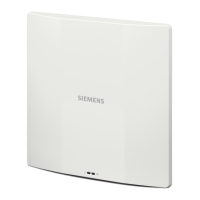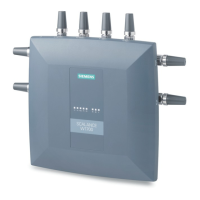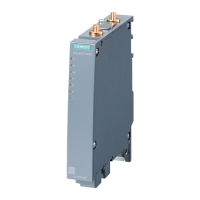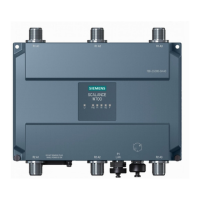Captive Portal for Guest Access
13.2 Configuring a WLAN SSID for Guest Access
SCALANCE W1750D UI
Configuration Manual, 02/2018, C79000-G8976-C451-02
165
Zone Specify the zone for the SSID. When the zone is defined in SSID profile
and if the same zone is defined on an AP, the SSID is created on that AP.
For more information on configuring zone details, see Configuring Zone
Settings on an AP on page 67.
The following constraints apply to the zone configuration:
• An AP can belong to only one zone and only one zone can be config-
ured on an SSID.
• If an SSID belongs to a zone, all APs in this zone can broadcast this
SSID. If no AP belongs to the zone configured on the SSID, the SSID
is not broadcast.
• If an SSID does not belong to any zone, all APs can broadcast this
SSID.
Time Range Click
, select a Time Range Profile from the list and specify if the pro-
file must be enabled or disabled for the SSID, and then click OK.
Bandwidth Limits Under
:
•
—Select this check box to specify an aggregate amount of
airtime that all clients in this network can use for sending and receiving
data.
Specify the airtime percentage.
•
—Select this check box to specify an aggregate amount of
throughput that each radio is allowed to provide for the connected cli-
ents.
•
and
—Specify the downstream and upstream
rates within a range of 1 to 65,535 Kbps for the SSID users. If the as-
signment is specific for each user, select the
check box.
Wi-Fi Multimedia (WMM) traffic man-
agement
Configure the following options for WMM traffic management. WMM sup-
ports voice, video, best effort, and background access categories. To
allocate bandwidth for the following types of traffic, specify a percentage
value under
. To configure DSCP mapping, specify a value under
.
•
—For background traffic such as file downloads or
print jobs.
•
—For best effort traffic such as traffic from legacy
devices or traffic from applications or devices that do not support QoS.
•
—For video traffic generated from video streaming.
•
— For voice traffic generated from the incoming and out-
going voice communication.
For more information on WMM traffic and DSCP mapping, see Wi-Fi Mul-
timedia Traffic Management (Page 376).

